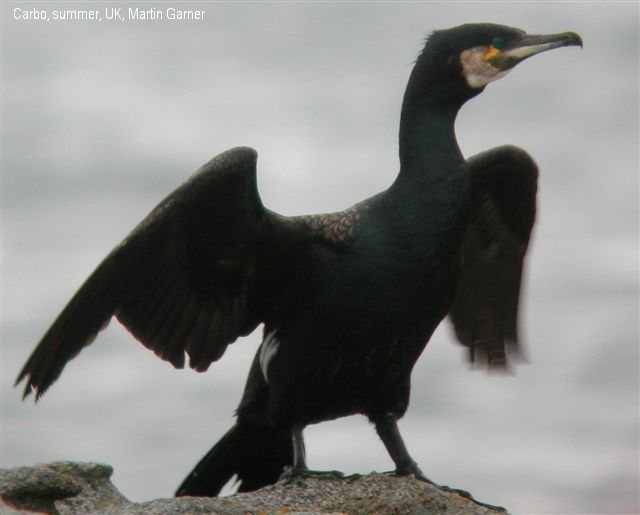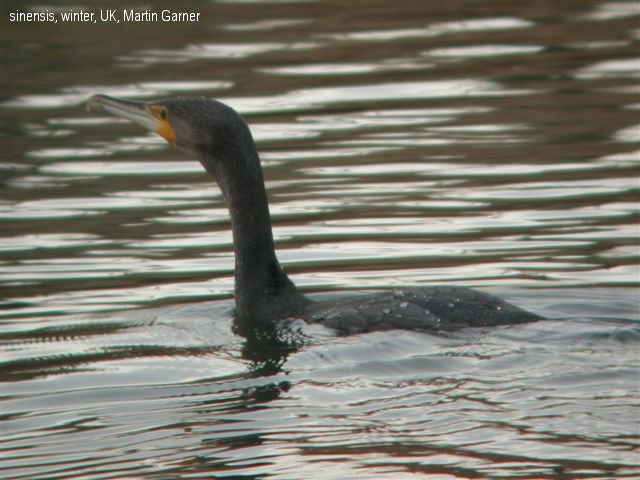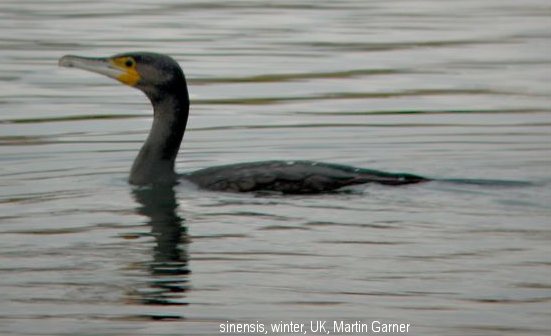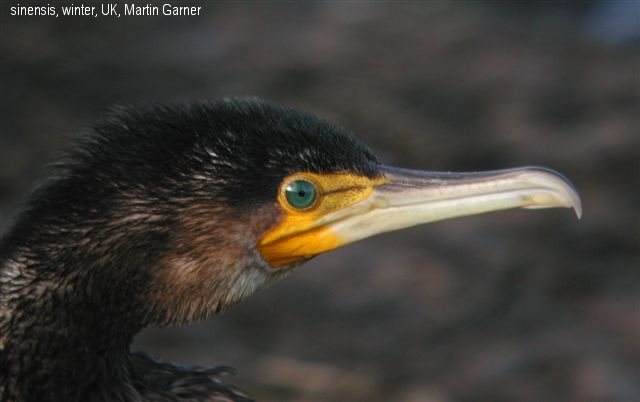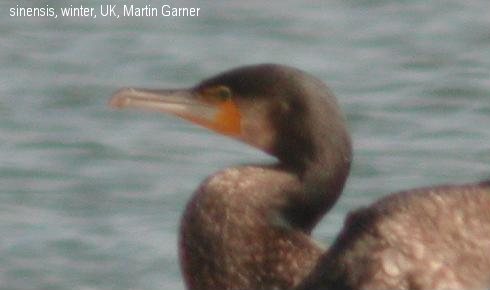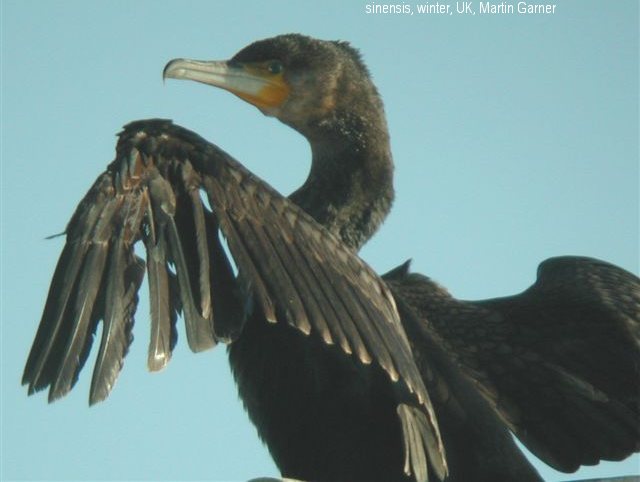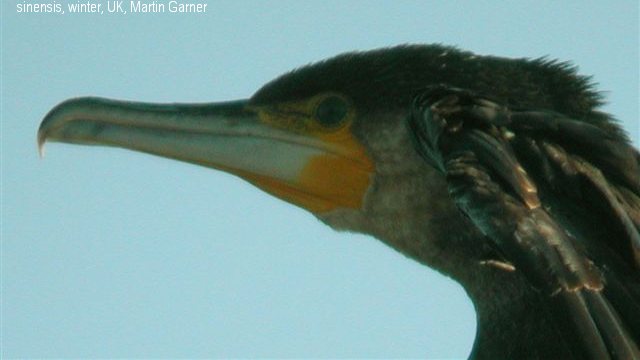Update September 25, 2004:
Thanks to a discussion with Martin Garner, and feedback from Killian
Mullarney et al on ID-FRONTIERS,
it seems that this bird is a sinesis Great Cormorant. The
race sinensis breeds from mainland Europe aross to northern
China and Pacific Russia as far north as northern Sakhalin Island,
with many sinensis being found in the British Isles outside
the breeding season, where they tend to be found in freshwater
situations much more than do nominate carbo (which breeds
in northern Scandinavia, the British Isles, Iceland, western Greenland,
and eastern North America.) NOTE that sinensis started
breeding in inland Britain in the1960s, and since then some normally
coastal-breeding carbo have moved in to these expanding
inland sinensis colonies, with some evidence of hybridization.
Thus, sinensis could be a stealth vagrant to North America.
This may seem esoteric for those in the Northeast, but sinensis
seems to differ from carbo by about as much as some other
cormorant species, and is a potential split. If some non-breeding
sinensis wander far enough north in the western Pacific,
it might occur on the west coast of North America.
Recent advances in Europe have provided birders there with the
means to identify them from carbo, yet the form sinensis
can be VERY like DC Cormorant, in that:
- it sometimes has a largely dark belly that is SLIGHTLY darker
than the brown chest/neck.
- the loral/gular skin can be orangy-yellow (yellow in carbo),
and extends through the loral area into the supraloral area (below
the lores in carbo.)
- the bill is typically a bit smaller and less bulky than on carbo.
- the angle of the gapeline:gular "bend" is greater
than 60%, and can be 90% - thus identical to DC (angle less than
60% on carbo).
- often lacks the band of white fathering immediately next to
the gular pouch (carbo invariably has this band) - but
this area is normally a bit paler brown than the rest of the head.
- the gular pouch usually has the distinctive "V" of
feathering intruding into the center (as on carbo), but
can often completely lack this gular feathering,
looking just like DC cormorant in this regard.
Other than the retrix count (DC has 12 tail feathers; carbo
and sinensis 14), the only feature of DC not seen on
sinensis is the yellow (lower) mandible typical of the
great majority of DCs - but note that some young DCs have a more
ivory-toned (lower) mandible, and DCs in their 2CY or older frequently
have grayish-ivory bills (usually flecked with dark.)
Look below the pics of this bird to see
two more cormorants from Tring, plus a sample of carbo
and a few sinensis, kindly provided by Martin Garner. NOTE
that some of these birds might be hybrids - this ongoing challenge
is beyond the scope of this article!
_______________________________________________________________________________________________________________________
ORIGINAL INTRODUCTION:
I found this cormorant at Tring Reservoir (south), Herts, UK on
September 15, 2004 just after visitng the NHM to study snipe specimens.
It was with two Great Cormorants and was clearly smaller than
them, with a more orange-toned gular pouch, gentler-looking head/bill,
orange-yellow on the supraloral, and rounded border to the gular
pouch, with no feathering intruding into the center (I checked
this carefuly in the 'scope).
I felt it was a Double-crested Cormorant - at least, it would
not have given me a moment's hesitation back home in Texas, where
I hope to one day find a Great Cormorant. I called in it in to
a few people in the UK, but I got the impression that I was not
taken too seriously (thank goodness - see update!).
I'd really appreciate feedback on the ID of this cormorant
- thanks.
The gular pouch had a rounded shape, with no intruding feathering
in the center:
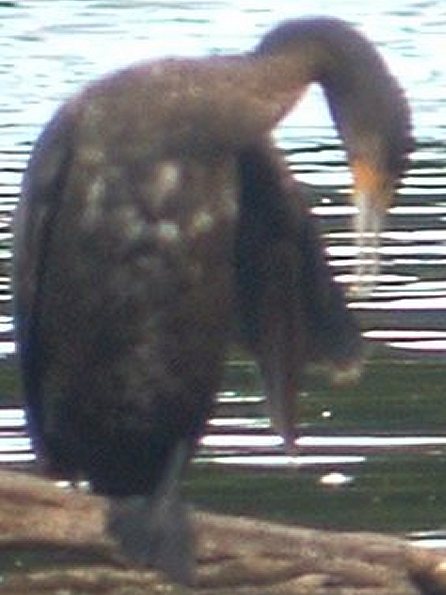
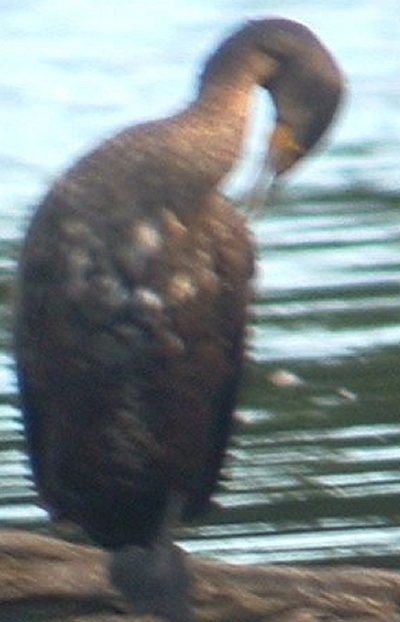
note in this image the shadow-effect that often creates the impression
of dark feathering in the gular pouch:
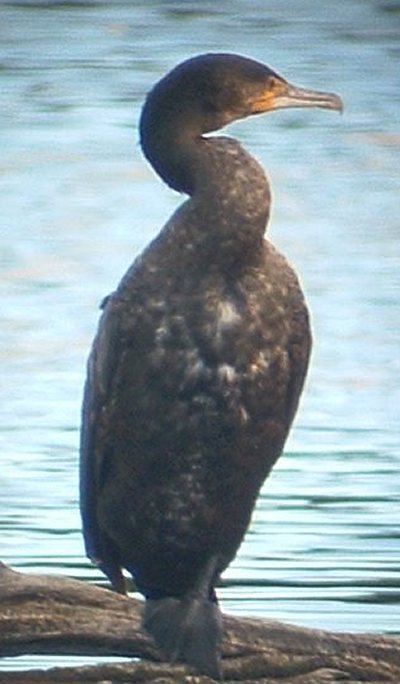
- but this image shows the center of the gular pouch is orange-yellow:

The bill mostly looked ivory-toned rather than yellow-toned on
the mandible, but not as clearly-so as on the nearby Great Cormorants.
While most juvenile DCs have a yellowish mandible, some have a
more ivory-toned bill, and older birds often have an ivory-gray
bill:
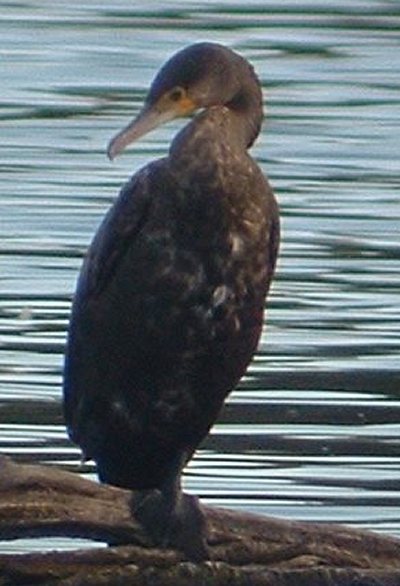

Here is another shot that indicates the lack of gular feathering:
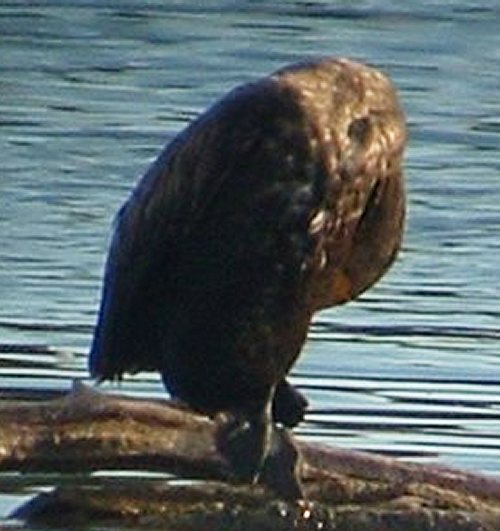
in thsi zoom, note the angle of the eye - it ia almost flat-on.
given the down-angled head-on shape of all cormorants, this means
that a great deal (more than half) of the gular area is visible
in this image:
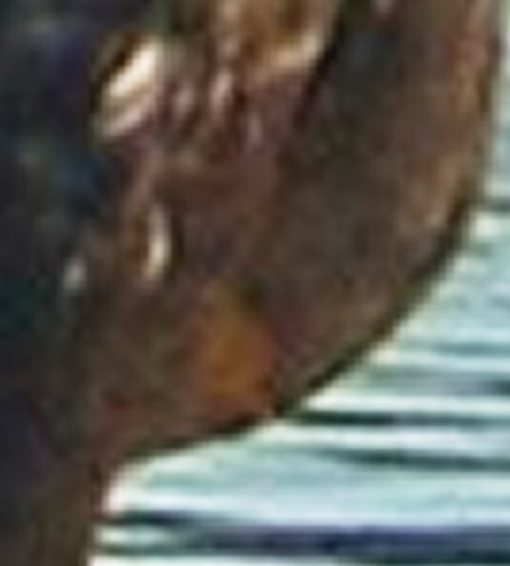
_____________________________________________________________________________________________________________
This bird was also at Tring Res. the same day; presumably a sinensis:
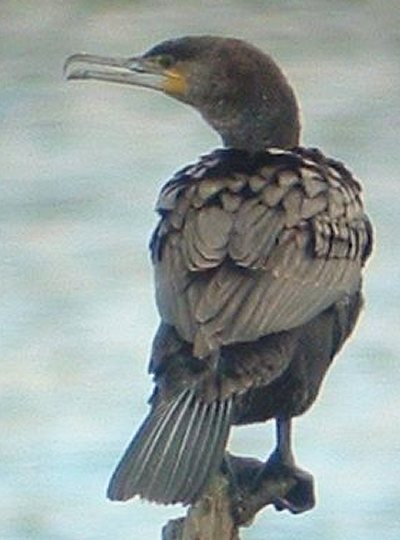
This presumed carbo was also next to the above birds at
Tring:
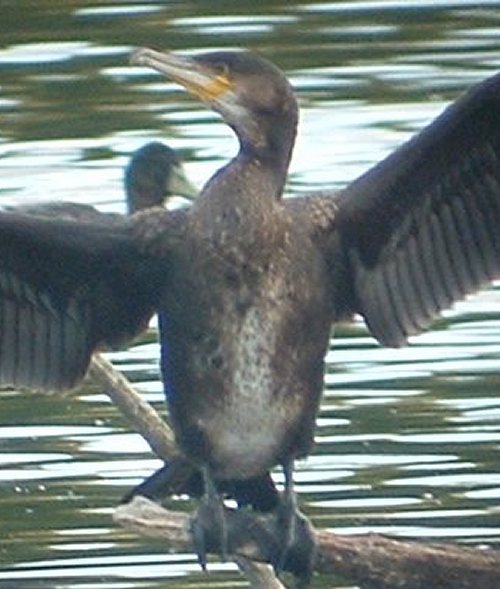
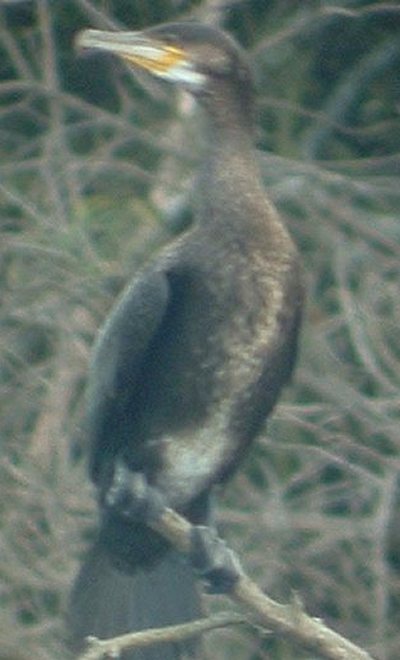
Martin Garner graciously provided me with the following images
from the UK to place on my web page, so as to provide a comparison:
